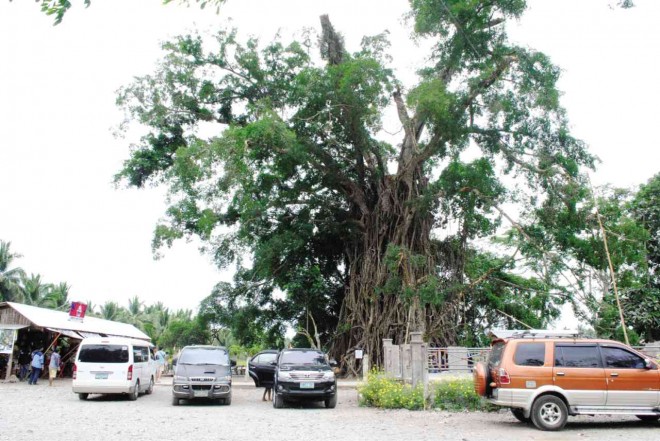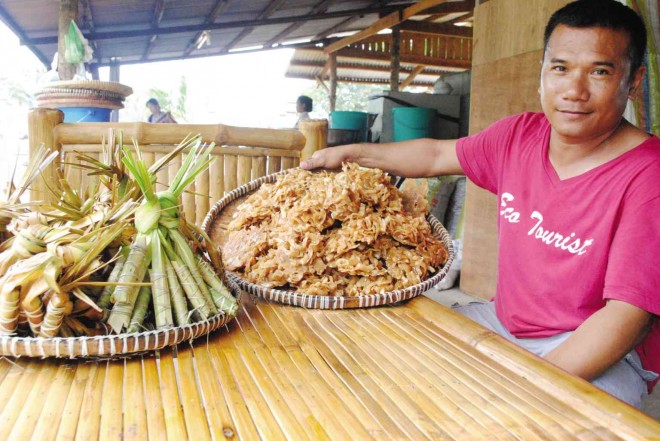Tourists go to eco-park for ‘balete,’ ‘pakumbo’

THOUGH its canopy and some branches were clipped by past typhoons, this 600-year old, 65-meter tall “balete” (banyan) tree in Maria Aurora town in Aurora province continues to attract tourists. Another destination is the nearby ‘pasalubong’ center to sample the native delicacies ‘pakumbo’ and ‘suman.’ PHOTOS BY ANSELMO ROQUE/INQUIRER CENTRAL LUZON
MARIA AURORA, Aurora—In full view of tourists who come to Barangay (village) Quirino here to see a 600-year old “balete” (banyan) tree, about 40 workers prepare the native delicacies “pakumbo” and “suman.”
These look like the same delicacies found in many markets in central and northern Luzon, especially in areas where coconut trees thrive. But these are sought after because visitors witness how these are prepared and because of its unique taste.
Pakumbo is a sweet delicacy prepared by simmering strips of young coconut meat in coconut water, brown sugar, vanilla and pandan leaves. These are then cooked for four hours.
Suman, on the other hand, is glutinous rice cooked in coconut milk and wrapped in buri palm leaves. Its preparation and cooking time are shorter than the pakumbo.
Harold Ronquillo, 41, manager of Ronquillo Balete Eco Park, said at least 3,000 pieces of pakumbo and 820 pieces of suman were being sold on ordinary days and more on weekends.
Article continues after this advertisementArticle continues after this advertisement

HAROLD Ronquillo, manager of Ronquillo Balete Eco Park, says the native delicacies “pakumbo de balete” and “suman de balete” are best-sellers.
Hollow portions
Ronquillo, an overseas Filipino worker, said his family, who owns the park, asked him to manage it in the meantime. He said that in 1952, his late father bought the 3.5-hectare land where the balete stands from its owner from Nueva Ecija province.
“We were told that there used to be a ‘dao’ tree in which this balete grew. Tourists explore the hollow portions at the base of the tree,” Ronquillo said.
Because of strong typhoons in the past years, the canopy of the 65-meter tall tree had been clipped. Nevertheless, the aura and the eerie massiveness of the intertwined roots, which need 60 adults to get their arms around it, continue to attract tourists.
Ronquillo said his family decided to put up a “pasalubong” center, with the pakumbo and suman as centerpiece products, so tourists could bring some when they return home. He said he did not expect that their products would become a hit.
“When our workers became hard-pressed to produce the strips of coconut, we asked someone to device a coconut meat stripper to help us. They can now produce as many strips as needed without much effort,” he said.
The pakumbo sells at P20 apiece and the suman at P60 per bundle of 10 pieces.
Entrance fee at the park is P10 for adults and P5 for children.
Ten people guide tourists and provide information about the tree. They also take their photographs.